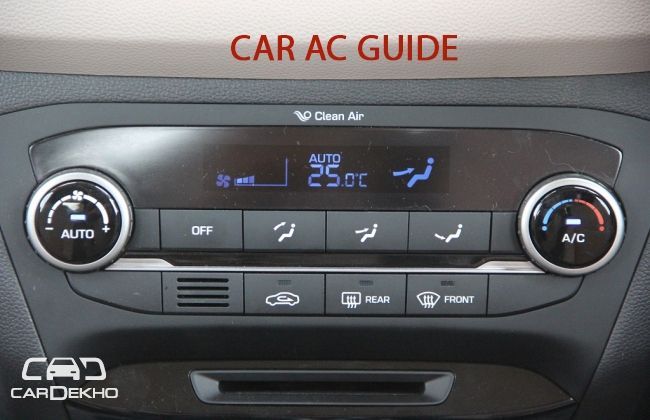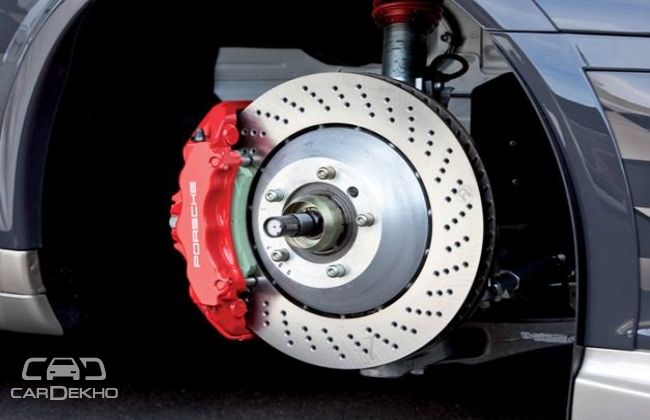Car AC Guide: Maintenance, Problems and Solutions
Published On Feb 25, 2015 11:46 AM By Rajpal
- 6 Comments
- Write a comment
As temperature rises, the first thing you wish in a car is a powerful AC. However, sometimes your car AC doesn’t work that efficiently and it can be one of the most uncomfortable situations as you sit in a well-packed cabin. There can be many reasons because of which your car’s AC does not works properly, however you can fix it, as most of the times the problems are not that big but can affect cooling drastically. In this article, we will describe the basic components and operations of AC, and if there is a malfunction, how to diagnose it.

How a Car AC works?

If you want to learn, how to maintain your car AC, you first need to understand it. The AC in a car is quite similar to the one you have at your home and works on the same principle of compression, condensation and expansion. However, operation wise it is a bit different unlike the conventional AC, Car AC works on a pulley system, means your car’s engine runs the AC as well.
The car’s AC is connected to the crankshaft via a belt; therefore this belt is responsible for transferring the power to the AC. The belt runs a pulley which runs compressor, when you switch on the AC. It works with an electrical clutch, which connects the compressor shaft to the pulley when you press the AC button.
The compressor is the heart of the air conditioning unit and refrigerant mostly R134a or R12 in older cars acts as blood. So, when you switch on the AC button, the electrical clutch gets activated and engage the compressor shaft to the running pulley. As soon as the compressor starts to rotate, it compresses the refrigerant, then the high-pressure, high-temperature refrigerant enters into the condenser, which works like a radiator. The condenser cools down the refrigerant and converts refrigerant into a cool liquid. From here, it moves to the receiver dryer, which removes any water component from refrigerant and thereafter it enters into the evaporator, which is located in the passenger cabin in front of the blower fan. When the cool refrigerant enters the evaporator, which is made of fins and tubes, it takes the heat from the ambient air, which comes from the fan.The liquid refrigerant again becomes gas and enters into the compressor for another cycle.
Maintenance of Car AC:

Now as you know all the crucial components of a Car AC, you can know how to maintain the AC. In most of the parts of our country we use AC for atleast 8-9 months in a year, so, it also needs regular maintenance just like any other part of your car. If you don’t maintain it, eventually, the cooling capacity will be affected. Here is some basic To Do points to keep your car’s air conditioning unit healthy
1. We recommend starting AC at least once in a week for 10 minutes, it will maintain the gas pressure and prevent hardening of the hoses, seals, and belt. 2. Whenever you turn on the AC, put it in the ‘defrost’ mode for five to ten minutes, it will clean out moisture from the system. By keeping this practice, you can keep the system germ and fungus free and it also prevents that dirty wet cloth odor in the cabin.
3. Always keep all car windows closed, it will keep the cabin cool. By doing this, the aerodynamics of the car remain at optimum, keeping fuel consumption low and exterior noise to a minimum, increasing safety of the driver and passengers.
4. Run the AC with air recirculation instead of fresh air circulation, as the system has to work hard to cool down the hot ambient air every time, and you can keep the car cool for longer by switching to air recirculation.
5. Take your car for a full AC service in every two-year, it will keep you ahead of low refrigerant, faulty AC clutch or compressor.
6. Keep the cabin filter and condenser clean, you can do it yourself as well. It enhances the efficiency of the AC.
How to inspect a Car AC
After a winter break, when you suddenly start the AC and found that it is not working efficiently, you will surely regret and sweat a lot. To avoid this situation, please do this quick check before summers, so you can diagnose and fix any issue.
1. Open the bonnet and locate the AC with the help of your usual manual. Now, put the car in parking mode and start it, and switch on the AC.
2. Now observe, is the belt connected properly and running the compressor pulley? There should be no vibrations, as it indicates a loose belt. Check the belt for cracks, wear, and glazing.
3. Is the compressor clutch engaged when the AC is switched on? Any easy way to check this is to see the running pulley, if the central part of the pulley is not running with it that means the clutch is not engaged. If it does not, this usually indicates a low (or empty) refrigerant condition or an electrical problem. So, you need professional help.
4. Check the air flow, does it blows cold air, luke warm air or air that is barely cooled? It could indicate a low refrigerant charge in the AC system. You need to get it recharged.
5. Check that all the AC mounting bolts are in place and tightly secured.
6. Check all the service caps installed on the AC system service ports, these keeps out dirt, and also provides a seal for refrigerant.
7. Inspect all the hoses for cuts, abrasion, weak spots, and signs of leakage.
8. Make sure the condenser (in front of the radiator) is clean and obstruction free, such as leaves or insects. This could reduce airflow, resulting in reduced AC performance. You can rinse the condenser clean with a garden hose.
9. Check the air cons and cabin filter, and get these cleaned. Dirt can block the air cons and filter.
How to fix Car AC problems

Now as you have inspected the AC system, we will talk about some common issue with car AC system and will describe how to fix it.
Open the hood and check for the compressor with the help of the user manual or you can locate it by following aluminum and rubber tubes. There you can see a large aluminum manifold with a moving belt driven pulley. If the pulley is not moving, it means the belt is broken or loose.
1. Broken, Loose or damaged AC belt:

As we mentioned above, the car AC runs via a belt and it can either have a separate belt or serpentine belt, which runs alternator, valve train and AC simultaneously. Check the belt for any damage, cut and check if it vibrates. Any vibration indicates a loose belt or faulty pretensioner.
Best practice:
Keep a check, and ask service engineer to examine the belt on every service.
2. AC Clutch is not engaging:

If belt is in good condition and moving the compressor head, then there can be multiple reasons affecting the AC. Generally a faulty compressor clutch is responsible for the same. Switch on the AC and observe the compressor closely, if the center of the pulley is not turning, then the compressor's clutch is not engaging. It indicates that either the clutch is malfunctioned or there is some electrical glitch like faulty AC relay or a blown fuse. Another reason can be the low refrigerant; the newer systems come with a low pressure cut out. Its switch doesn’t let compressor work to minimize the damage because of low coolant.
Best Practice:
As there can be multiple reasons, we would recommend you take expert help for the same.
3. Low Refrigerant in Car AC:
Refrigerant is the key of your AC’s performance, if it is having low refrigerant, it won’t be able to cool down the cabin. Generally, R134a is used as refrigerant, however some old cars still use the old R12. If your car is using R12, it need to be retrofitted, means the R12 need to be removed and need to be replaced with R134a, you will also need to replace the dryer (accumulator), refrigerant oil, O rings and orifice tube.
Best Practice:
Your Car AC loses around 10 percent refrigerant every year, so it is recommended that you should recharge the AC with refrigerant every 2 year.
Apart from permeation of air from air con, the AC can also lose refrigerant through leaks in hoses or from a broken O rings. So, always inspect for any leaks, any accumulation of dirt and oil, particularly at connections and fittings can hint a leakage.
4. Blockages in air vents, condenser, tubes and hoses

As the AC system is quite complex and consist of a lot of tubes, hoses and filters. Sometimes, the tubes can be blocked because of dust and other particles. A component like condenser, which is situated in front of radiator can be cleaned with a garden hose. While for other blockages, you need to take an expert help.










